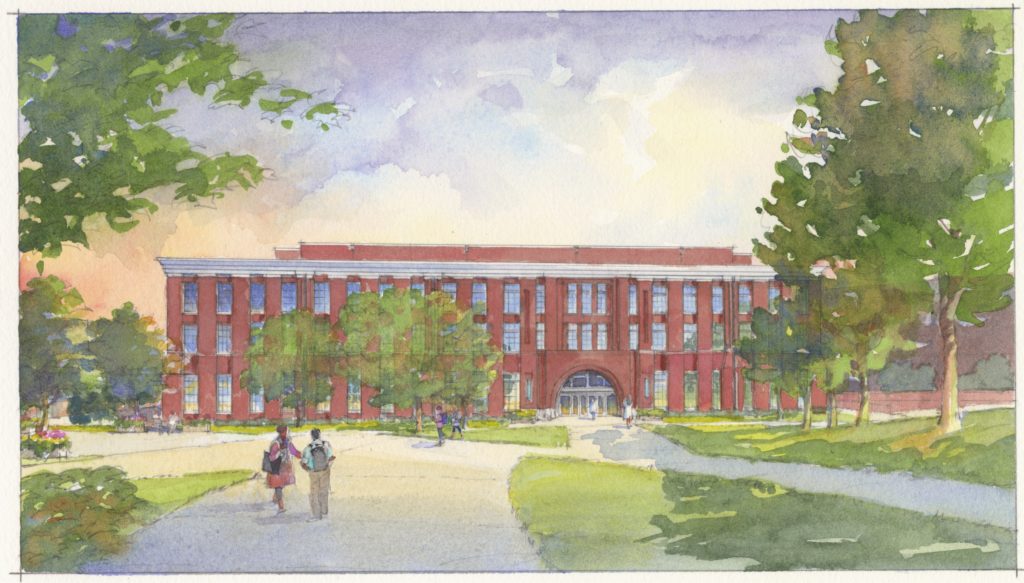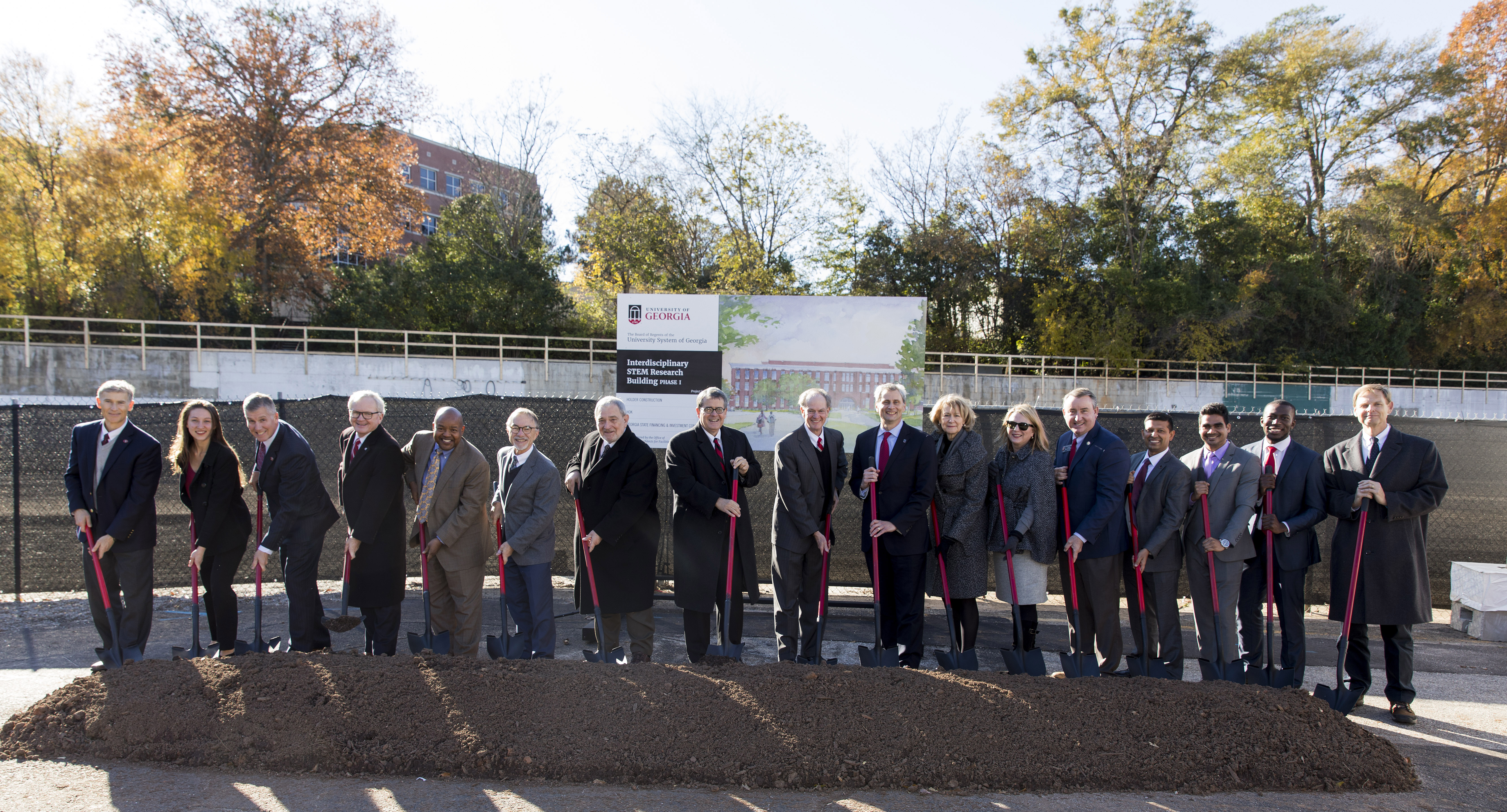The University of Georgia broke ground on the new Interdisciplinary Science, Technology, Engineering and Math (I-STEM) Research Building on Tuesday, Nov. 27.
Expected to open in summer 2021, the building will provide space for faculty and graduate students in chemistry and engineering. The facility represents the future of research and education in the STEM fields at UGA.
“Many of the complex problems of the 21st century—from crumbling infrastructure to chronic disease—require solutions that combine the latest advancements in chemistry, engineering and related fields,” said President Jere W. Morehead. “The Interdisciplinary STEM Research Building will be a world-class facility that promotes creative, interdisciplinary approaches to research that will lead to new products and services that improve the quality of life in Georgia and beyond.”
The $65 million project, which includes four stories of laboratory and support space and a three-story parking deck underneath, will be funded by a combination of university and state funds. More than $39 million in state funds has been appropriated over the past two years for design and construction of the new facility, and an additional $5.6 million is anticipated for equipment as construction progresses.

Nearly 30 percent of all college graduates in the state of Georgia pursue degrees in science or engineering, according to the National Science Foundation (NSF). At UGA, the number of students pursuing STEM degrees continues to grow, with about one out of every five graduates receiving a STEM degree last year.
Jobs requiring science or engineering degrees are expected to increase dramatically over the next decade. The I-STEM Research Building, along with a recent $3 million NSF grant to research and improve STEM education practices, will play a key role in expanding UGA’s prowess in STEM fields.
The 100,000-square-foot building will be home to more than 30 faculty and 100 graduate students from chemistry and engineering, and it will foster the development of joint ideas in areas ranging from cell imaging and microfluidic separation to combustion chemistry and medical robotics.
The location of the Interdisciplinary STEM Research Building in the heart of the South Campus science and engineering corridor at the corner of Cedar Street and East Campus Road will promote even greater collaboration among chemistry and engineering researchers and their colleagues in the life sciences, agriculture, computer science and biomedicine.


